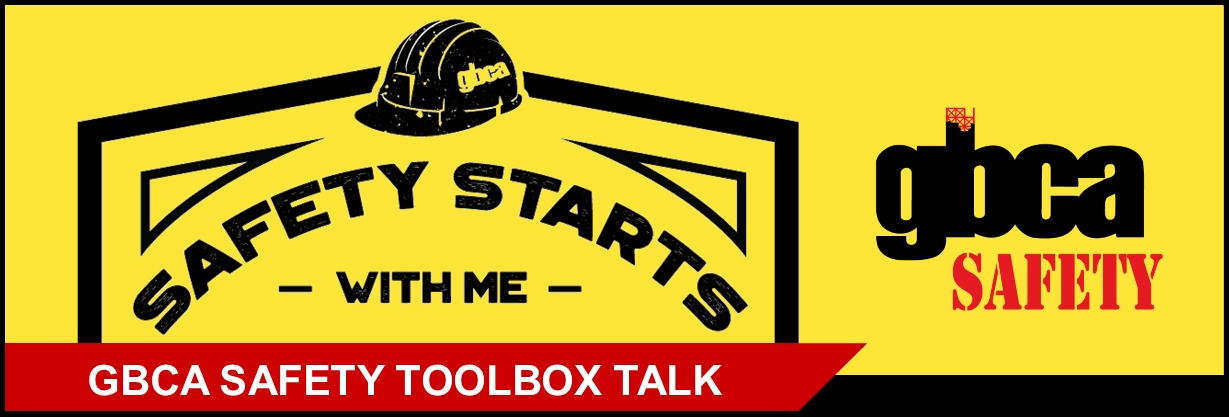This GBCA Safety Toolbox Talk discusses scaffold electrical safety, and provides tips and reminders for when setting up scaffolds near overhead power lines. Click below to download the Toolbox Talk as a handout (includes Sign-In Sheet).
Scaffold Electrical Safety
Scaffolds, an important tool in construction, sometimes pose potential hazards to workers. Electrical hazards are often overlooked when setting up and working on scaffolds. Overhead, powerlines are usually safe from contact because of their distance: they are usually 18.5 to 35 feet above the ground.
Scaffolds, however, increase our height of work, bringing workers closer to the energized powerlines. This toolbox talk covers how to prevent electrocutions and injuries resulting from contact between overhead power lines and conductive tools, materials, or scaffolds.
Reminders for Working on Scaffolds Near Power Lines
- LOOK UP! Be aware of overhead power lines in your work area. Most overhead power lines are NOT insulated.
- Recognize the hazards of moving. erecting, or working from scaffolds near overhead power lines. Review GBCA’s Toolbox Talk on Working Around Overhead Power Lines.
- Conduct initial and daily surveys of the worksite. Implement control measures and training to address hazards at the site.
- Remember that just because a wire has a plastic covering does NOT necessarily mean that it’s insulated.
- Never assume that any wire is below 300V. Contact your local utility company to verify wires’ voltages or to insulate wires.
- Restrict the use of electrically conductive tools or materials where they may contact overhead power lines.
- Be trained in cardiopulmonary resuscitation (CPR). Make sure that someone on the team is trained in CPR.
Scaffolds should not be used or moved within the following minimum clearance distances from overhead power lines (29 CFR 1926.451(f)(6)):
- 3 feet for insulated power lines of less than 300 volts.
- 10 feet for insulated power lines of 300 volts or more.
- 10 feet for uninsulated power lines of less than 50,000 volts.
If scaffolds must be used or moved near overhead power lines, appoint a Competent Person (Spotter) to observe the clearance between the power lines and the scaffold. This person’s only responsibility is to observe and warn others if the minimum distance is not maintained.
Best Practice: Keep scaffolds 10 feet away from overhead power lines. Even at the Secondary Level, maintain 10 feet unless you explicitly know that the wires are below 300V AND insulated.
If minimum clearance cannot be maintained when scaffolds must be erected or moved near overhead power lines, notify the utility company to de-energize the power lines or provide adequate insulation before any work is initiated.
Remember to record the attendees of your toolbox talk!






